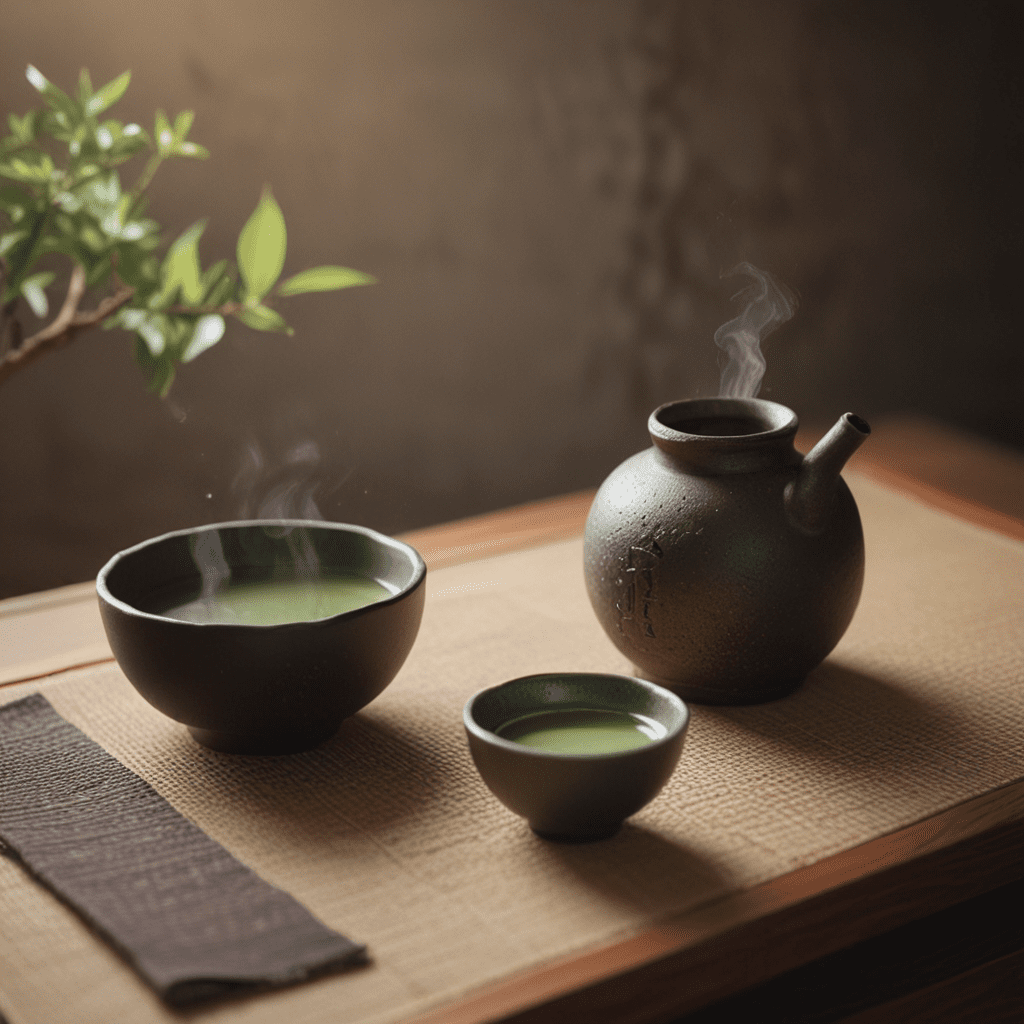
1. Introduction: The Essence of Imperfection in Japanese Tea Ceremony
The Japanese tea ceremony, known as chanoyu or chadō, is a profound cultural practice that embodies the principles of wabi-sabi, an aesthetic philosophy that embraces the beauty of imperfection. This ancient ritual is not merely about the consumption of tea; it is an immersive experience that cultivates mindfulness, harmony, and an appreciation for the ephemeral nature of existence.
At the heart of the tea ceremony lies the concept of embracing imperfections. Unlike Western tea rituals that often emphasize elaborate settings and refined etiquette, the Japanese tea ceremony celebrates the unique and irregular. This acceptance of imperfection extends to every aspect of the ceremony, from the rustic tea house to the intentionally irregular teaware.
2. Historical Roots: Wabi-Sabi and the Appreciation of Imperfection
The origins of wabi-sabi can be traced back to the 15th century, when Zen Buddhism began to influence Japanese culture. Zen teachings emphasized the impermanence of all things and the beauty found in simplicity and asymmetry. These principles resonated with tea masters, who began to incorporate them into their tea ceremonies.
Wabi-sabi became a central tenet of the tea ceremony, guiding the choice of teaware, the arrangement of flowers, and even the way tea was prepared. By embracing the imperfect, tea practitioners sought to create a space where guests could escape the distractions of the outside world and find solace in the beauty of simplicity.
3. The Ritualistic Preparation: Embracing the Imperfect Process
The preparation of tea in the Japanese tea ceremony is a carefully orchestrated ritual that embodies the principles of wabi-sabi. Every step, from measuring the tea leaves to whisking the powdered tea, is imbued with intention and attention to detail. However, these actions are not performed with the precision of a machine; rather, they are carried out with a mindful acceptance of the imperfections that may arise.
The tea master does not seek to create a perfect cup of tea; instead, they embrace the unexpected variations that occur during the preparation process. These imperfections become unique expressions of the moment, adding to the overall experience of the tea ceremony.
4. The Imperfect Tea House: A Reflection of Impermanence
The tea house, known as chashitsu, is an integral part of the tea ceremony. Unlike grand palaces or elaborate mansions, the tea house is often a small, rustic structure built with natural materials. Its imperfections, such as asymmetrical walls or uneven floors, reflect the impermanence of all things.
The tea house is designed to create an intimate and contemplative space where guests can shed their worldly concerns and focus on the present moment. The simplicity of the tea house serves as a reminder that true beauty lies in the acceptance of imperfection.
5. The Irregular Teaware: Celebrating the Unique and Unfinished
The teaware used in the Japanese tea ceremony is another embodiment of wabi-sabi. Tea bowls, known as chawans, are often irregularly shaped, with rough edges and uneven surfaces. These imperfections are not seen as flaws but rather as unique characteristics that add to the bowl's beauty.
The tea masters believe that the irregular shape of the tea bowl encourages guests to hold it with both hands, creating a more intimate connection with the tea. The imperfections of the teaware also symbolize the unfinished nature of life, reminding guests that there is always room for growth and learning.
6. The Imperfect Nature of the Tea Bowl: A Symbol of Acceptance
The tea bowl, or chawan, holds a central place in the Japanese tea ceremony. It is not merely a vessel for holding tea; it is a symbol of acceptance and impermanence. The tea bowl is often made of rustic materials, such as clay or wood, and its surface may be uneven or asymmetrical. These imperfections are not seen as flaws but rather as expressions of the beauty of the natural world.
The tea bowl is also a reminder of the impermanence of all things. As the tea is consumed, the bowl becomes empty, symbolizing the fleeting nature of life. This reminder encourages guests to cherish the present moment and to appreciate the beauty of the imperfect.
7. The Imperfect Gesture: Cultivating Mindfulness and Attention
Every gesture in the Japanese tea ceremony is imbued with intention and mindfulness. The tea master's movements are slow and deliberate, reflecting a deep respect for the tea and the guests. However, these gestures are not performed with mechanical precision; rather, they are carried out with a mindful acceptance of the imperfections that may arise.
The tea master does not seek to create a perfect performance; instead, they embrace the unexpected variations that occur during the ceremony. These imperfections become unique expressions of the moment, adding to the overall experience of the tea ceremony.
8. The Imperfect Guest: Embracing Individuality and Inclusivity
The Japanese tea ceremony is not a ritual that is confined to a select few; it is open to people of all backgrounds and walks of life. The tea master welcomes guests with open arms, regardless of their social status or personal imperfections.
The tea ceremony is a space where guests can come together as equals, shedding their social masks and embracing their true selves. This inclusivity creates a sense of community and belonging, fostering a deeper connection between the participants.
9. The Imperfect Outcome: Seeking Harmony amidst Imperfection
The Japanese tea ceremony is not about achieving a perfect outcome; it is about finding harmony amidst imperfection. The tea master does not strive to create a flawless performance or to serve a perfect cup of tea. Instead, they embrace the imperfections that arise during the ceremony.
The tea ceremony is a reminder that life is not perfect and that there is beauty in the unexpected. By accepting the imperfections of the ceremony, guests can learn to let go of their own expectations and to appreciate the beauty of the present moment.
10. Conclusion: The Transformative Power of Imperfection in Japanese Tea Ceremony
The Japanese tea ceremony is a profound practice that teaches us the beauty of imperfection. It is a ritual that encourages us to embrace our own imperfections and to find harmony amidst the chaos of life. By accepting the imperfect, we can open ourselves up to new possibilities and to a deeper understanding of the world around us.
The Japanese tea ceremony is a living tradition that continues to inspire and transform people today. It is a reminder that true beauty lies in the acceptance of imperfection and that there is always room for growth and learning.
FAQs
What is the significance of imperfection in the Japanese tea ceremony?
Imperfection is central to the Japanese tea ceremony, as it reflects the wabi-sabi aesthetic philosophy, which embraces the beauty of the imperfect and impermanent.
How is imperfection expressed in the tea ceremony?
Imperfection is expressed in the tea ceremony through the use of rustic teaware, irregular tea houses, and mindful gestures.
What is the purpose of the imperfect tea bowl?
The imperfect tea bowl symbolizes the impermanence of all things and encourages guests to cherish the present moment.
How does the tea ceremony promote inclusivity?
The tea ceremony is open to people of all backgrounds and walks of life, fostering a sense of community and belonging.
What is the ultimate goal of the Japanese tea ceremony?
The ultimate goal of the Japanese tea ceremony is to find harmony amidst imperfection, embracing the beauty of the present moment.

